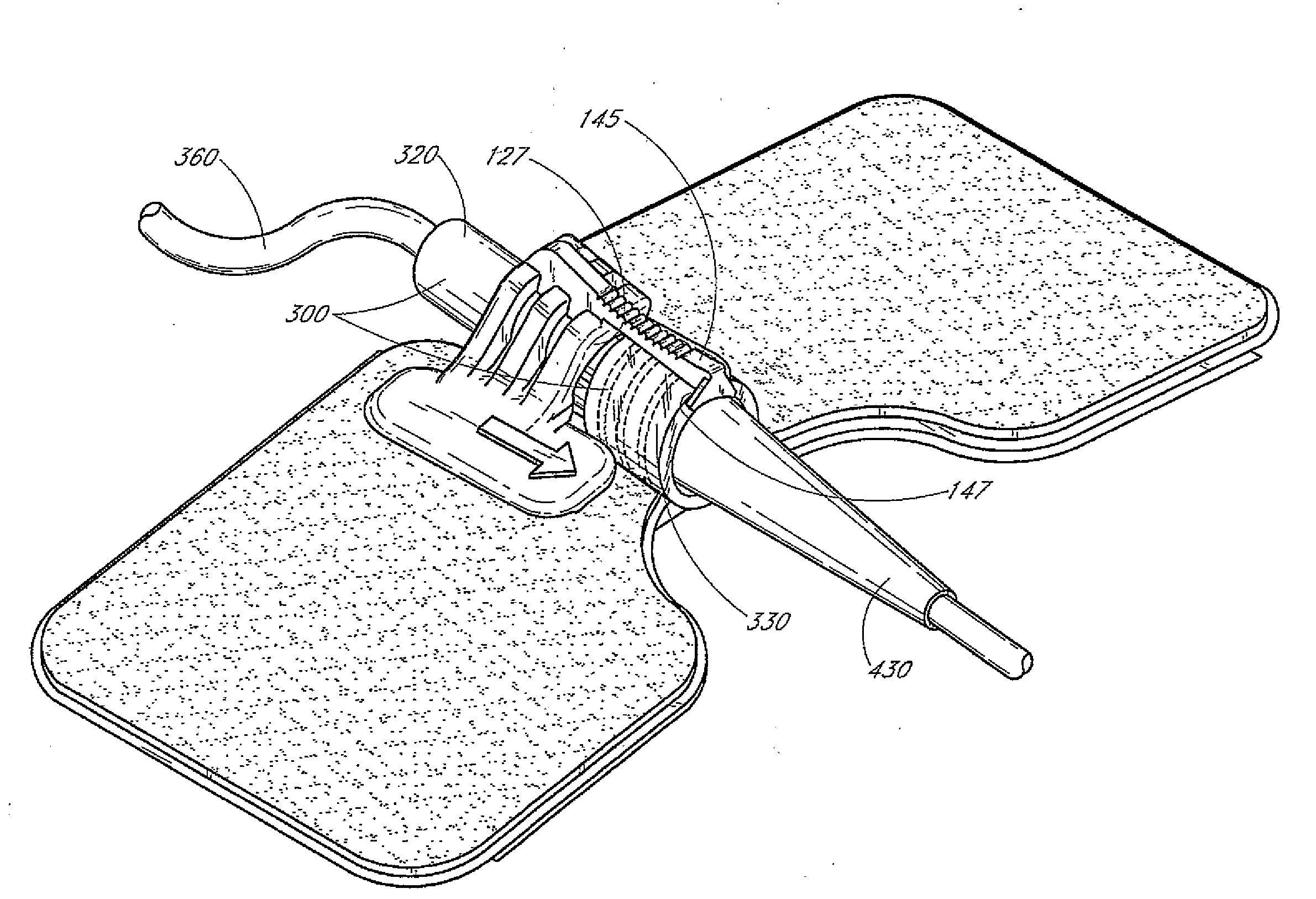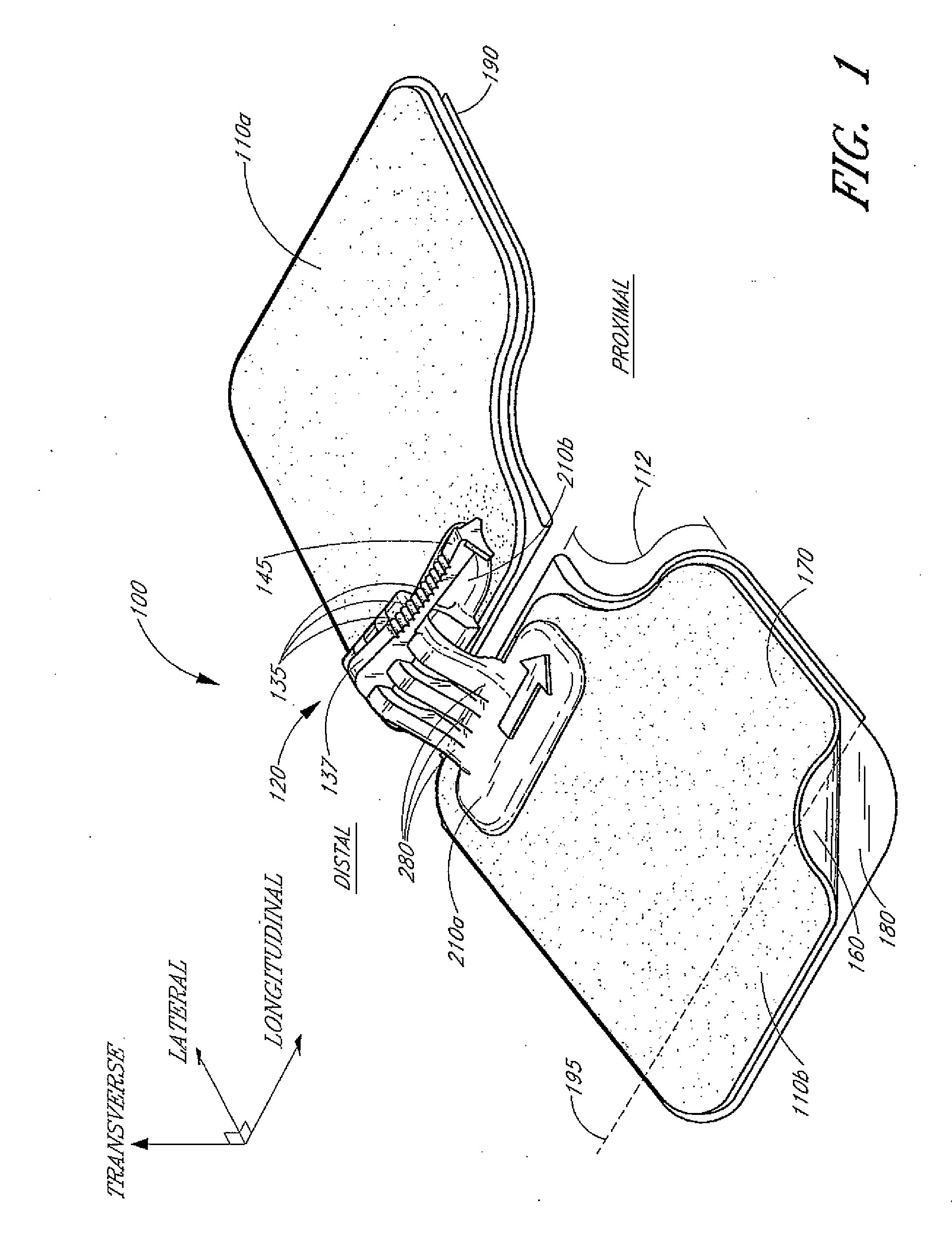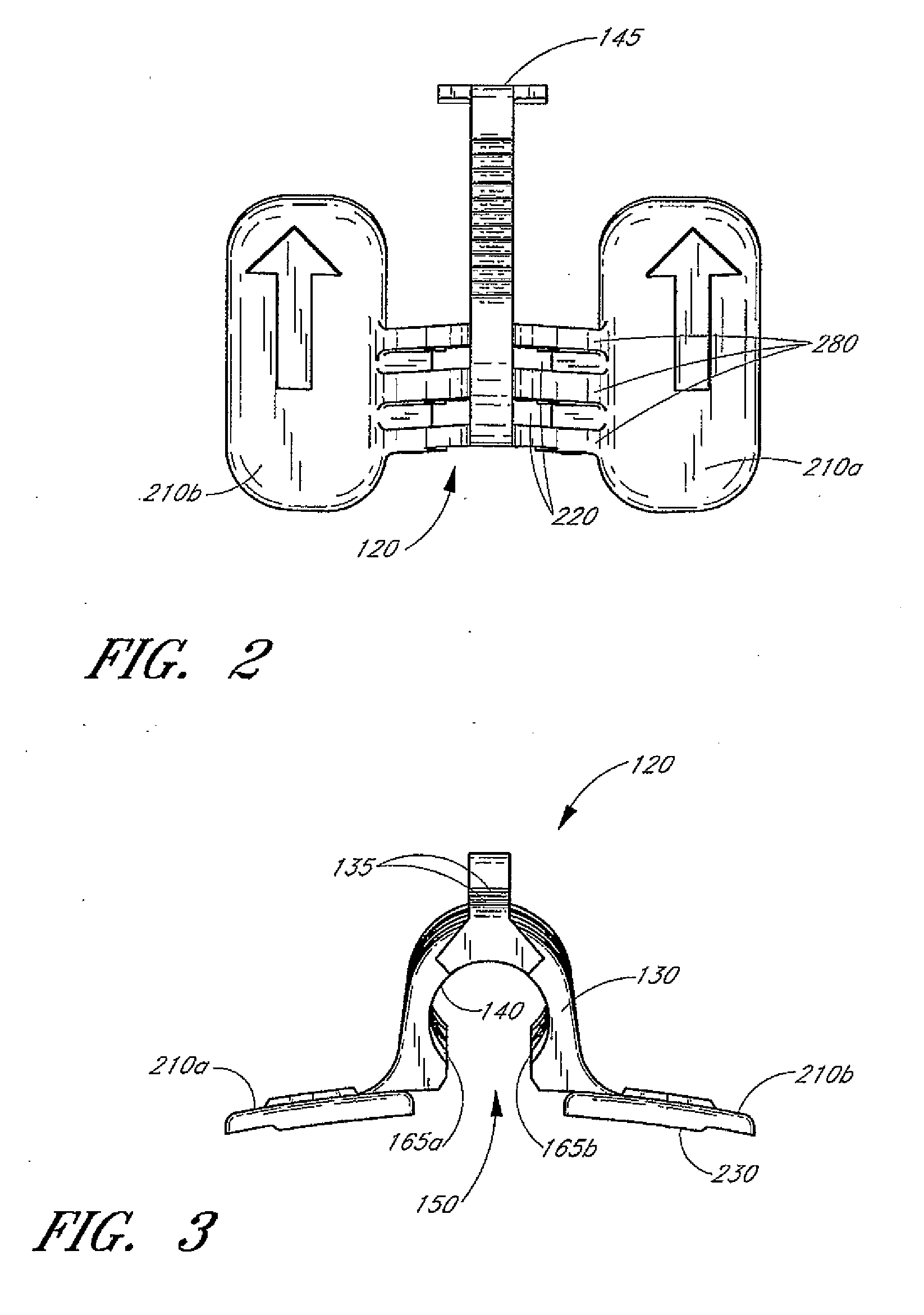Catheter securement device
- Summary
- Abstract
- Description
- Claims
- Application Information
AI Technical Summary
Problems solved by technology
Method used
Image
Examples
second embodiment
[0018]FIG. 6 is a perspective view of a retainer having a movable spine and ratchet arrangement to accommodate medical devices with different longitudinal lengths.
third embodiment
[0019]FIG. 7 is a perspective view of a retainer having two abutment surfaces located between the proximal and distal ends of the retainer body.
[0020]FIG. 8 is a top plan view of the retainer of FIG. 7.
[0021]FIG. 9 is a front side view of the retainer of FIG. 7.
[0022]FIG. 10 is a back side view of the retainer of FIG. 7.
[0023]FIG. 11 is a side view of the retainer of FIG. 7.
[0024]FIG. 12 is a cross section view taken along line 12-12 in FIG. 8 illustrating the abutment surfaces of the retainer.
[0025]FIG. 13 is a simplified perspective view of a medical article that includes contact surfaces corresponding to the abutment surfaces illustrated in FIG. 12.
[0026]FIG. 14 is a perspective view of the medical article illustrated in FIG. 13 secured to the retainer of FIG. 7.
[0027]FIG. 15 is a cross section view taken along line 15-15 in FIG. 14 illustrating the abutment surfaces of the retainer in register with the contact surfaces of the medical article.
fourth embodiment
[0028]FIG. 16 is a perspective view of a retainer having an abutment surface located between the proximal and distal ends of the retainer body.
[0029]FIG. 17 is a top plan view of the retainer of FIG. 16.
[0030]FIG. 18 is a front side view of the retainer of FIG. 16.
[0031]FIG. 19 is a back side view of the retainer of FIG. 16.
[0032]FIG. 20 is a side view of the retainer of FIG. 16.
[0033]FIG. 21 is a cross section view taken along line 21-21 in FIG. 17 illustrating the abutment surface of the retainer.
[0034]FIG. 22 is a simplified perspective view of a medical article that includes a contact surface corresponding to the abutment surface illustrated in FIG. 21.
[0035]FIG. 23 is a perspective view of the medical article illustrated in FIG. 22 secured to the retainer of FIG. 16.
[0036]FIG. 24 is a cross section view taken along line 24-24 in FIG. 23 illustrating the abutment surface of the retainer in register with the contact surface of the medical article.
PUM
 Login to View More
Login to View More Abstract
Description
Claims
Application Information
 Login to View More
Login to View More - R&D
- Intellectual Property
- Life Sciences
- Materials
- Tech Scout
- Unparalleled Data Quality
- Higher Quality Content
- 60% Fewer Hallucinations
Browse by: Latest US Patents, China's latest patents, Technical Efficacy Thesaurus, Application Domain, Technology Topic, Popular Technical Reports.
© 2025 PatSnap. All rights reserved.Legal|Privacy policy|Modern Slavery Act Transparency Statement|Sitemap|About US| Contact US: help@patsnap.com



